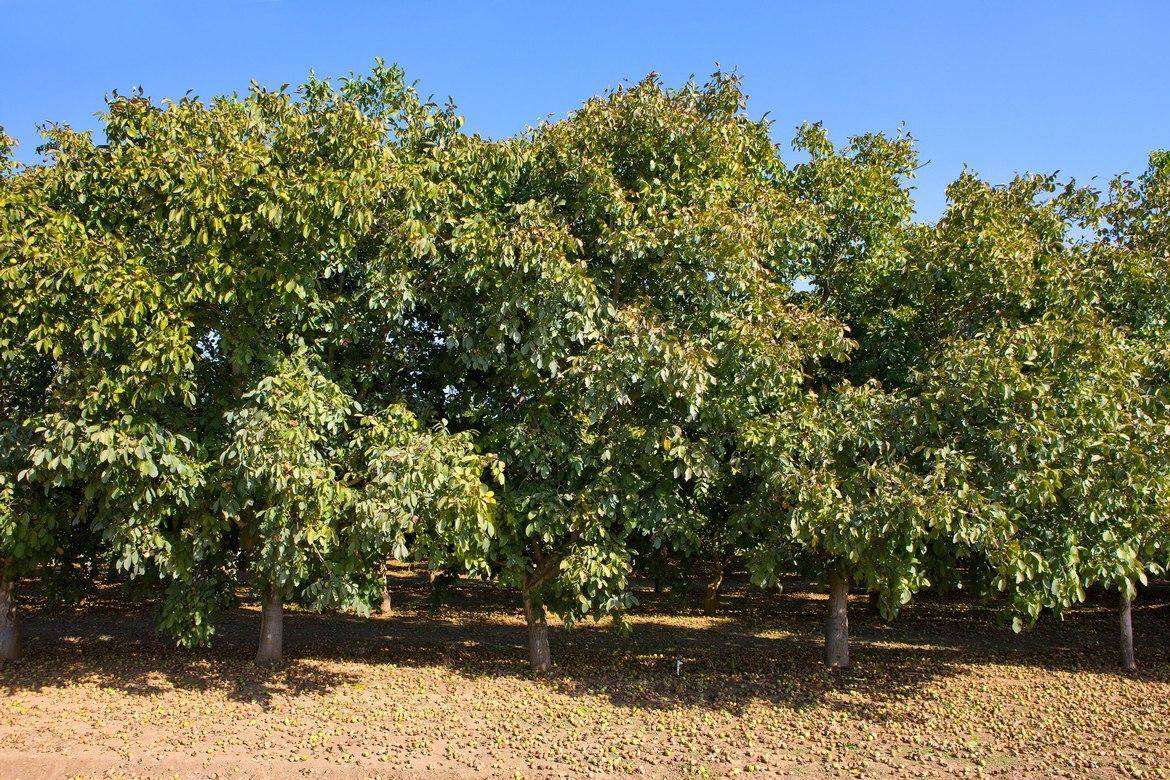Learn more about considerations for managing the 2014 drought.
Managing the Drought
Previous orchard development decisions that include investment in groundwater development, choice of an efficient irrigation method, and orchard systems that foster earlier production have an important role in managing the 2014 drought. Walnut is sensitive to a reliable irrigation water supply and water quality so most walnut growers have gone the extra mile to ensure that walnuts are planted where the long term outlook for a sufficient supply of good quality water is relatively robust. As a result, most walnut growers are positioned relatively well to endure the current drought.
At this point in the season, one consideration is to focus attention on irrigation system performance. During drought, it is common for groundwater levels to decline usually reaching their lowest point in August. Pump flow rates and irrigation system pressure may decrease as groundwater levels decline and water managers need to be aware of this. Use of flow meters, either large meters installed as part of the pumping plant or smaller in-line flow meters, and system pressure checks at the head, middle, and end of the irrigation system can help identify when an irrigation system is not performing as expected. If the pump flow rate or system pressure has declined significantly the water application rate and irrigation distribution uniformity will also decline and the orchard will not be irrigated uniformly. This condition may require modifications in irrigation frequency and duration in the short term. If the irrigation system performance has declined drastically, more significant measures such as pump repairs, replacements, or irrigation system retrofits may be needed to sustain functional water application rates and irrigation uniformity. It is much more difficult to make good irrigation decisions regarding frequency and duration when the rate of applied water is uncertain and the irrigation system is not delivering water uniformly throughout an orchard.
Managing Bearing Walnut Orchards
Achieving large walnuts with light kernels, encouraging floral bud development for the 2015 crop, and preparing the walnut trees for dormancy and overwintering are among some of the objectives that can be influenced by mid-summer and fall irrigation management in bearing walnut orchards. ET in mature walnut orchards is commonly between 1.5 and 2.0 inches per week in late July and August. If irrigation is managed to meet these approximate levels of water consumption and walnut tree stress is maintained in the -5 to -8 bar range, sunburn can be reduced and large, light kernels can be achieved. The likelihood of darker kernels and kernel shrivel increases when trees are exposed to higher levels of water stress ranging from -8 to -12 bars. Fruitfulness of next year’s crop can also be improved or sustained at tree stress levels of -5 to -8 bars.. When walnut tree stress in late July and August was allowed to increase and sustained between -8 and -12 bars stress in experiments, tree fruitfulness and nut yields declined between 18 and 40 percent depending on the extent and duration of the tree stress. Sufficient pre-harvest irrigation (September) and post-harvest irrigation (October) will help maintain sufficient tree canopy to sustain photosynthesis and storage of carbohydrates and sugars in the tree and roots after the crop is removed. This will help trees overwinter especially when unusually cold fall and winter temperatures occur. Because day length is shorter and temperatures are declining, the level of irrigation needed in September and October is lower than July and August. Weekly water applications of 1.0 to 1.5 inches will generally meet this need in September and applications of 0.4 to 0.8 inches per week will meet the need in October. In walnut growing regions with higher rainfall, irrigation during some of September and much of October may be unnecessary. The pressure chamber is the best way to check if this is the case. Tree stress levels of -6 to -8 bars are reasonable for September and October.

